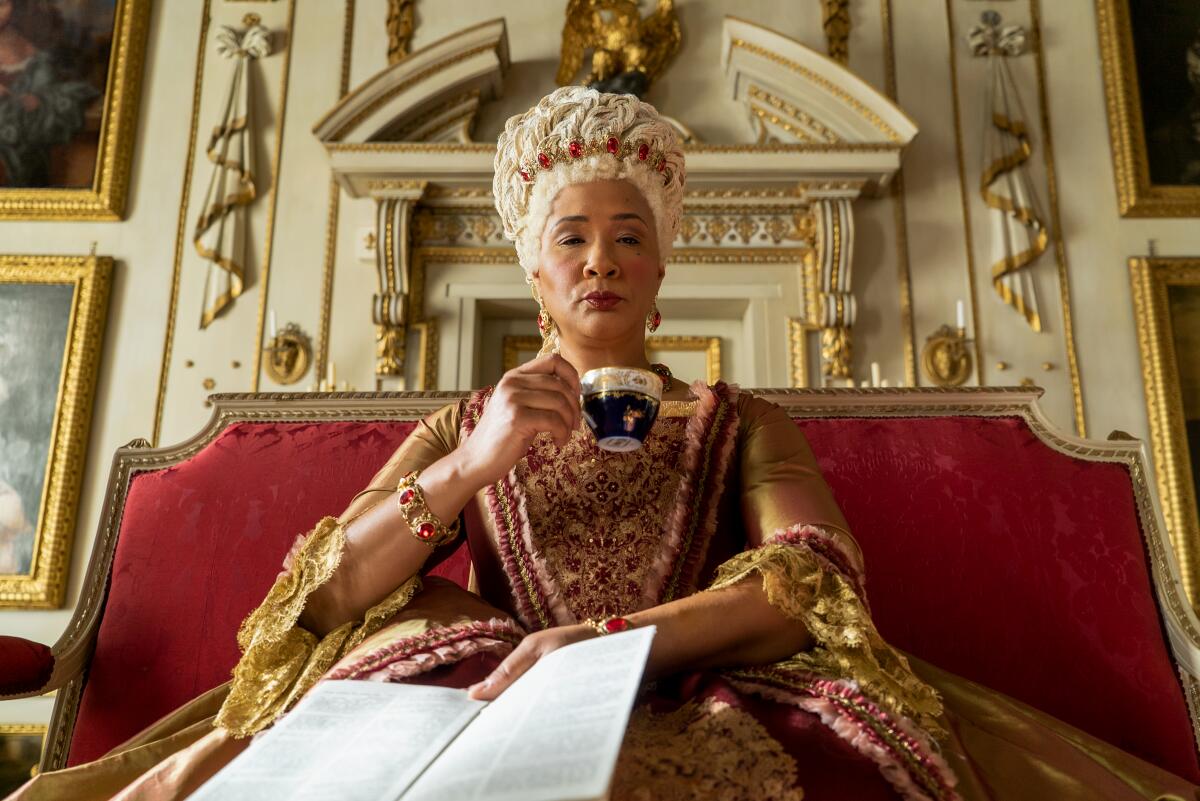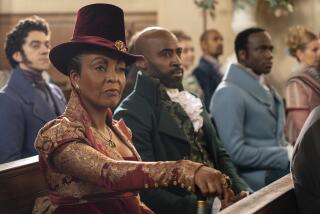Don’t look to ‘Bridgerton’s’ costumes for a history lesson. It’s more fun this way.

Netflix’s global streaming hit “Bridgerton” was envisioned as a massive project from the start. Ultimately viewed by 82 million households worldwide, the eight-episode series is adapted from the wildly popular Julia Quinn romance novels and tells the tale of an early 1800s British family’s social aspirations. Veteran costume designer Ellen Mirojnick jumped at the challenge to work on such a bold series.
“I’d worked with Shondaland before, so I knew it was going to be a mix of fantasy and history and that we’d have the budget to do it properly,” says the New York native. Ultimately, about 7,500 bespoke costume pieces (with 104 sartorial changes for principal actress Phoebe Dynevor as Daphne Bridgerton alone) are stored inside a London warehouse.
The luxurious “Bridgerton” designs mix Regency period with modern color, drape, pattern and style in a confluence of historical accuracy and make-believe. “It’s the biggest show I’ve ever done, and I’ve done some big shows,” says Mirojnick. “I’d have to say it was a once-in-a-lifetime experience.”
Would you describe “Bridgerton’s” costumes as historical with a fantasy overlay or fantasy with a historical overlay?
It’s a fantasy that takes place at a historical period of time. I knew this project was going to be a very expensive endeavor and, knowing Shondaland, it’s a different perception of how you create a time period; it’s never a history lesson. It’s an adaptation of the story just as the costumes are an adaptation of 1813 London Regency centering mostly on the upper crust of society. The one thing we understood at the beginning was how this was going to be a bonnet-less universe, so that’s the biggest clue you can have that it’s a fantasy on a time period. It was meant to be aspirational and available to a modern audience.
I understand every piece was bespoke and nothing was rented. Is this accurate?
Yes, everything was made and nothing was rented except the clothing of the lesser-means folks in the duke and duchess’ town.
Let’s talk color. How did Daphne’s soft-blue-to-silver arc come about?
The Bridgerton family was sophisticated, well-educated, moneyed and quite understated. The whole family was kind of inspired by French macarons. There was a beautiful version of a Tiffany blue I saw one day saddled up against white encrusted filigree, and when I saw that, I knew, “That’s Daphne.” From Daphne, the whole circle of color arrived for the rest of the family.
What can you tell us about Daphne’s gorgeous wedding gown?
I love that piece; it’s one of my absolute favorites. We went to Paris looking for fabric, purchased it, and what’s magnificent about that dress is how it’s sewn as one piece of fabric that’s been draped around her body. It is just so pristine.
Lady Featherington’s (Polly Walker) sartorial choices are amazing …
Did you like them?
I loved them!
The Featheringtons’ colors were first marked by how they were written. [Showrunner] Chris Van Dusen interpreted from the book that they wore “acidic” colors. Penelope (Nicola Coughlan) and the Featheringtons are of new wealth, don’t have the pedigree, want to be seen as part of society, and their interpretation is a little louder. No insult intended, because I love this designer, but they’re kind of the Versace of the time. For Lady Featherington, we happened upon these fabrics in a London shop in very bright colors patterned with gold — and they just suited her personality. A couple of times she wears solid dresses, but when we looked at a solid wardrobe with a couple of prints in reverse, it didn’t work.
Queen Charlotte, simply over the top!
The color combinations are glorious. When [Golda Rosheuvel] walked into the room, it was clear and we never tried her in another silhouette. They were not easy gowns to wear, but she was able to carry it all with elegance and grace and strength. And then the brilliance of the wig designer [Adam James Phillips] took it beyond. Once he put the oversize wigs on, you went, “Well, there she is.” It then became an extraordinary adventure as we never knew what was going to arrive. And God bless Golda, she did have a lot to carry.
All the characters — down to the background players — seemed to relish the costumes.
That was the beauty all these characters brought into our lives. It doesn’t always happen. But on this show it was so glorious that whatever you imagined to begin with as a designer, when the actors walked into the room there was no disappointment. They suited every color, every combination. The Featherington girls looked perfect and felt they were the Kardashians of the time. And took pride in that. And Polly, she was just in heaven because it was all so unexpected. The actors thought they were going to be in beige and it was going to be like Jane Austen.
Are you aware of all the opinions, controversies and general discussions surrounding mixed-period worlds such as “Bridgerton”? All of the cosplay?
I thought we’d get slammed. When we first were coming on air, I thought, “Oh, no, they’ll criticize this, they’ll criticize that — ‘This isn’t real, that’s not real.’” I’m always aware of every single criticism amidst the applause. I’m aware of it all. The cosplay has been absolutely great fun. But this was one I was really scared to do.
More to Read
From the Oscars to the Emmys.
Get the Envelope newsletter for exclusive awards season coverage, behind-the-scenes stories from the Envelope podcast and columnist Glenn Whipp’s must-read analysis.
You may occasionally receive promotional content from the Los Angeles Times.










